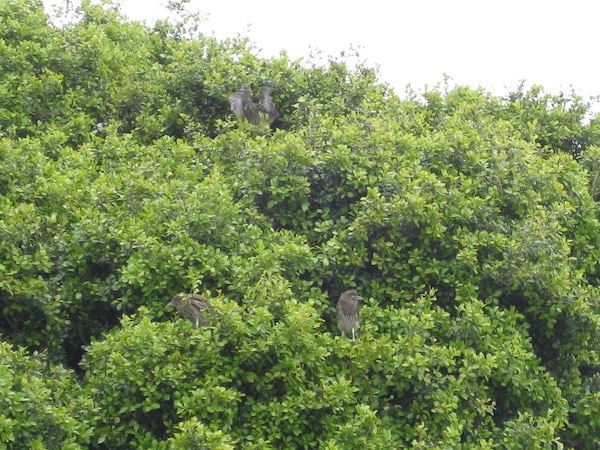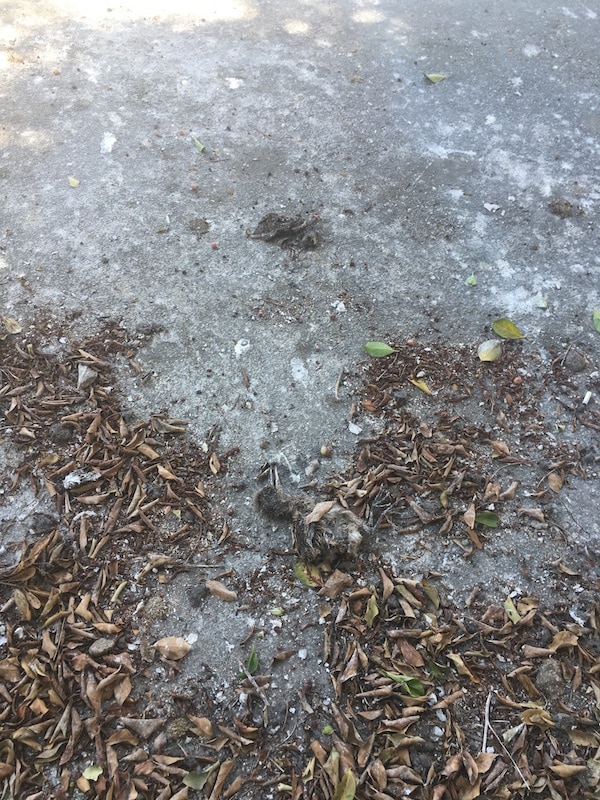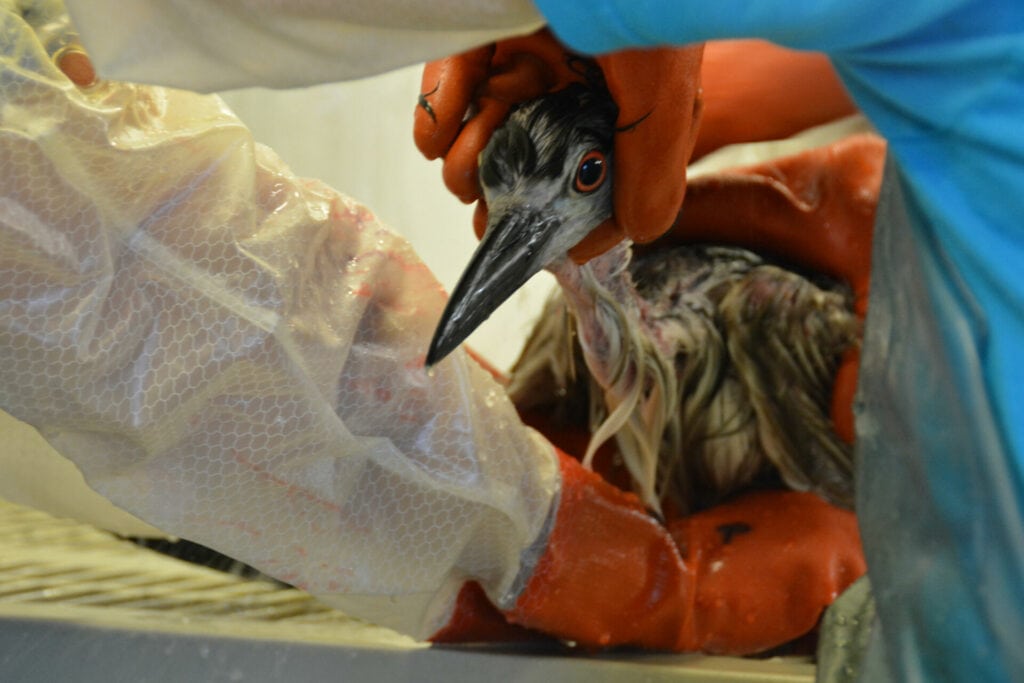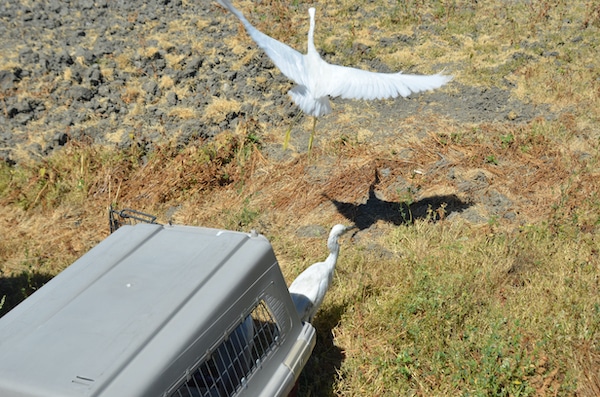From the Trees to the Streets to Safety
By Ryan Nakano
On the corner of 12th and Harrison and along the perimeter of the Oakland Museum of California, nesting herons and egrets make a home among 10 large ficus trees. Unfortunately for many chicks, the streets below spell only danger.

“The rookery in downtown Oakland is not a very healthy place for these birds to be nesting, as there is nowhere for their chicks to make the next steps into adulthood nearby,” Rebecca Duerr, the International Bird Rescue Director of Research and Veterinary Science, said. “Consequently, they (chicks) often fledge into the street and either starve or get hit by cars. Sometimes they land badly and fracture bones.”

In January, the Oakland Zoo put out a call, offering four part-time positions responsible for rescuing these birds in downtown Oakland. Reinstating the Heron and Egret Rescue Program, the Oakland Zoo is now taking the lead in protecting fledgling Black-crowned Night Herons and Snowy Egrets from unsafe living conditions.
“We’re just now in the early phases of launching the program, but a large part of it will be going down there to check it out. Everyday the Oakland staff will scout in the morning and then go back in the afternoon,” Colleen Kinzley, Oakland Zoo Vice President of Animal Care Conservation and Research, said.”
Unfortunately, the problem of injured and unsafe heron and egret chicks in these areas is not new. Ever since they were spotted breeding downtown in 2010, they’ve faced the inherent dangers of nesting in an urban environment.
In 2015, in response to tree trimmers knocking down several active nests, Golden Gate Bird Alliance, the Oakland Zoo and the International Bird Rescue formed a partnership to rescue threatened herons and egrets in downtown Oakland.
In 2017, a group of developers removed and pruned back many of the trees that were once used by the birds as nesting sites. During this process they worked with wildlife ecologists to strategize around relocating the nests to Lake Merritt in hopes that the herons and egrets would follow. After an unsuccessful season of relocation, the city decided to end monitoring and relocation attempts.
With no permanent solutions, Black-crowned Night Herons and Egret fledglings continue to end up on the street, making the rescue program an essential animal welfare project.

After six years partnering with Golden Gate Bird Alliance, the Oakland Zoo hopes this dedicated three-year program will provide structure to the historically ad-hoc process for finding these vulnerable birds.
Since our involvement, we’ve had people contacting us and we recognized this was an ongoing problem. When the project ended there just wasn’t structure but people continued to call us and bring us birds,” Kinzley said. “ I decided that I wanted to come up with a real program and make a commitment to a reasonable period of time to do the job as effectively as possible.”
Using foldable cardboard pet carriers, trained staff will work together to secure and immediately transport birds to the Oakland Zoo to be assessed by a veterinary team. Continuing its partnership with the International Bird Rescue (IBR), rescued birds will then be taken to the IBR on a daily basis if necessary.

“The Oakland herons and egrets commonly have various parasitic infections, lots of wounds, occasional abscesses, fractures from falling or getting hit by a car. Chicks are often starving, cold, and anemic at arrival so (they) require a lot of care for the first several days,” Duerr explained.
While under the care of the IBR, the herons and egrets will end up eating about half their body weight in fish each day, while also being provided vitamins and calcium supplements. Once the birds seem healthy enough, they are often released at Laguna de Santa Rosa in Santa Rosa or in Alameda.

While the search and rescue operation for these birds is the primary aim for the Heron and Egret rescue program, it’s not the only objective according to Kinzley, who initially proposed the program.
“What does it take to co-exist with wildlife?” Kinzley said. “I’m not sure what the answers are. What is the long term solution to the situation?”. “Us picking up birds every summer for three years is not the answer, we need to come up with something that’s good for birds and good for people.”

Kinzley hopes that the program will generate more discussion around the need to find a long-term solution. Oakland Zoo staff are currently creating flyers and postcards to help educate the public on the importance of habitat restoration and creating proper nesting spaces for these birds. The program materials will also include instructions for residents who happen to come across fledglings on the streets of downtown Oakland.
“If you find a young bird, put it in an appropriate sized box, leave it in a warm spot and we’ll come find it,” Kinzley said.
For anyone interested in getting involved, the Oakland Zoo is looking for volunteers to assist the Heron and Egret Rescue project staff during the morning and afternoon as well as driver’s willing to take birds up to the International Bird Rescue in Fairfield. For more information email ozvolserv@oaklandzoo.org.
Interested in learning more about the International Bird Rescue? Why not register for an exclusive behind-the-scenes tour of the organization on April 9th as part of our Birdathon fundraiser here.
